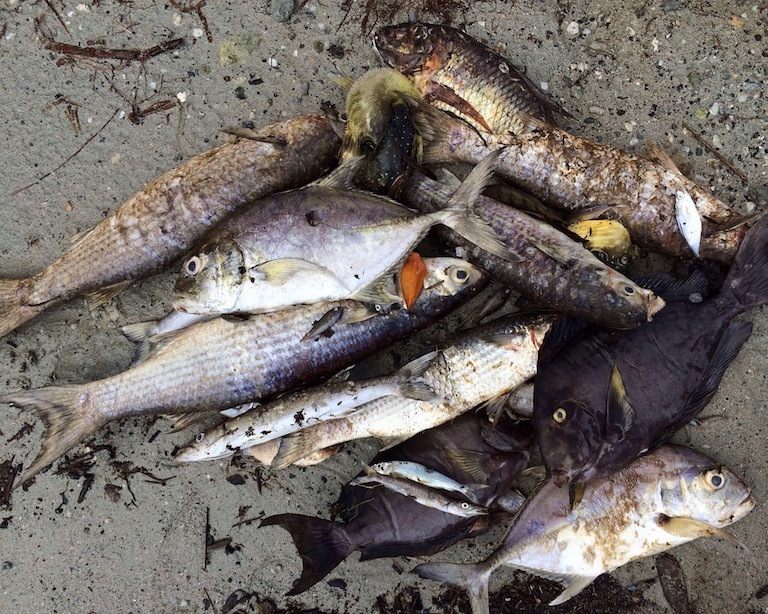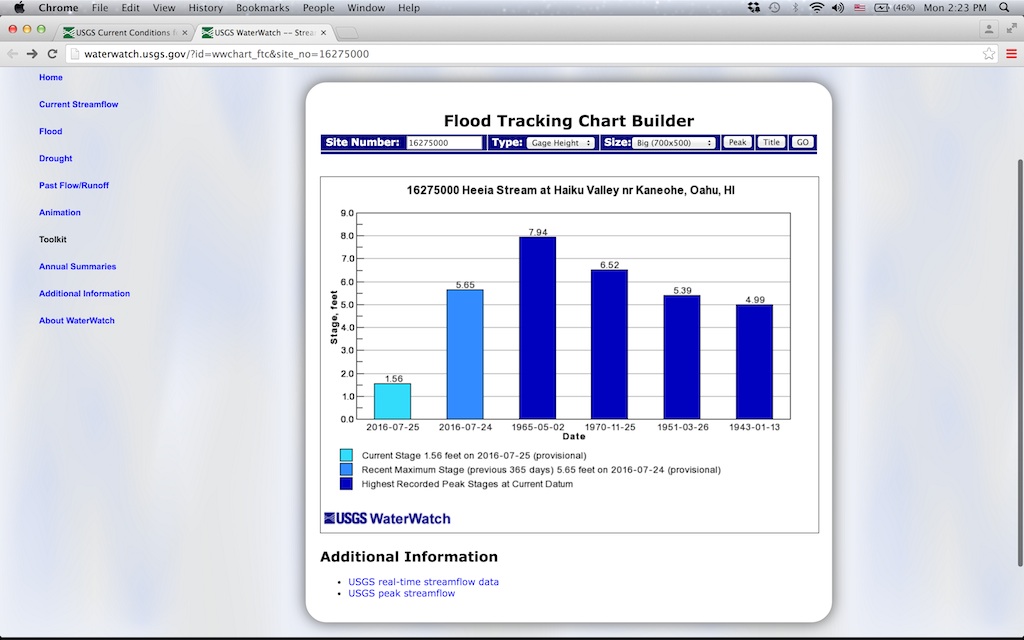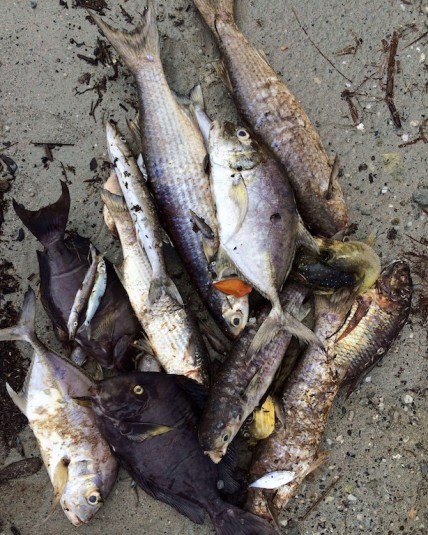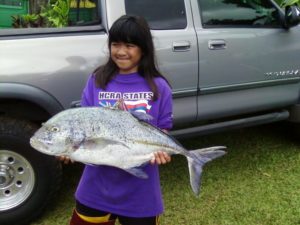
Tropical Storm Darby

So yeah. Weʻve seen floods here at the fishpond before but not like this. Atleast since Paepae o Heʻeia has been around (16 years). And from what our neighbors tell us its been decades since theyʻve seen something like that. Im talking about when Tropical Storm Darby parked its rain-laden thunderstorms over Koʻolaupoko and drenched us to the core.

The stream height in Heʻeia reached the 3rd highest its reached in the last 67 years. Only a flood in 1970 was slightly higher and then the massive flood of 1965 that created the 200-foot wide “puka” in our wall was higher too. Thatʻs it. July 24thʻs flood was #3. Un-REAL. Part of the silver lining of this all is that we had scientific probes in the water when it happened so we can learn more about these types of rare floods than ever before. Also, we feel better equipped than maybe any other caretaker (atleast in recent history) to pick up the pieces and rebuild. So what do we need to rebuild? Check this out:

 A section of kuapā that we justrebuilt in the last 12 months as a part of our Pani ka Puka campaign was blown out by the flood waters. This happened because the flood waters filled up Heʻeia Fishpond and the whole pond overflowed from the inside out. What we mean is that debris, fish, and a torrent of fresh water rushed into the pond, clogged the mākāhā, and filled the pond up. And then in some areas of our wall it overflowed out into the ocean. In other areas it just deposited hundred of pounds of debris onto our wall.
A section of kuapā that we justrebuilt in the last 12 months as a part of our Pani ka Puka campaign was blown out by the flood waters. This happened because the flood waters filled up Heʻeia Fishpond and the whole pond overflowed from the inside out. What we mean is that debris, fish, and a torrent of fresh water rushed into the pond, clogged the mākāhā, and filled the pond up. And then in some areas of our wall it overflowed out into the ocean. In other areas it just deposited hundred of pounds of debris onto our wall.
In the end, there were massive mortalities of fish like we havenʻt seen before. Big fish, small fish, predators, and herbivores – they all got it. Whatever fish we didnt clean off the wall or out of the waters just began to stink after a few days and that was not fun.
 In all, we are happy that a flood of this magnitude happened during our tenure at Heʻeia Fishpond because we know that the repairs and maintenance the pond needs right now is well within our capabilities. Once the water cleans up alittle (bacteria and sediment) then we can get back to work so the wall doesnt continue to slowly crumble. That is probably one of the greatest challenges facing fishpond restoration today – not the hands to rebuild the pond but the momentum to pick up the walls when theyʻve fallen.
In all, we are happy that a flood of this magnitude happened during our tenure at Heʻeia Fishpond because we know that the repairs and maintenance the pond needs right now is well within our capabilities. Once the water cleans up alittle (bacteria and sediment) then we can get back to work so the wall doesnt continue to slowly crumble. That is probably one of the greatest challenges facing fishpond restoration today – not the hands to rebuild the pond but the momentum to pick up the walls when theyʻve fallen.



